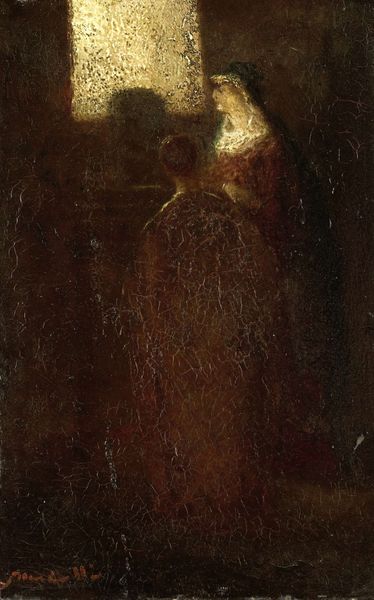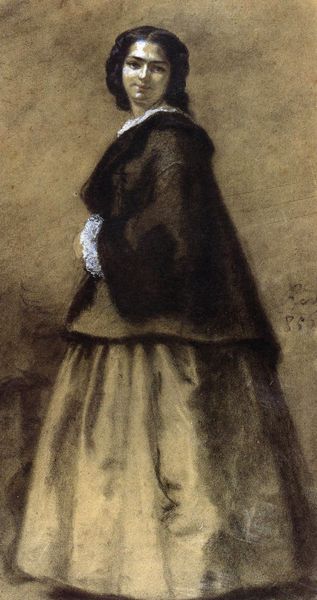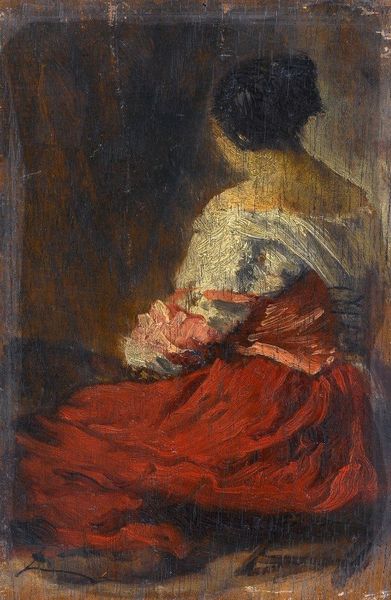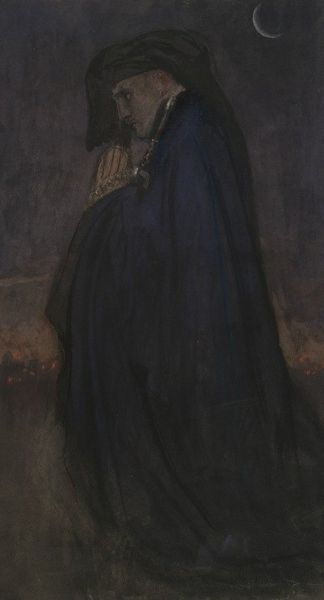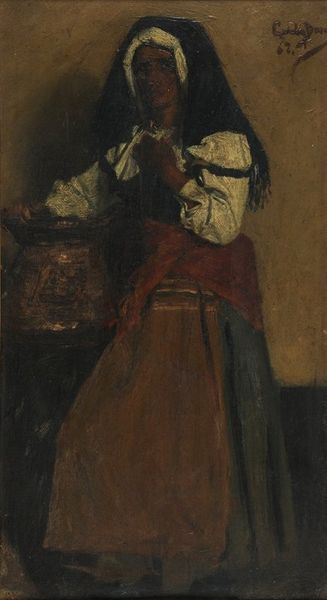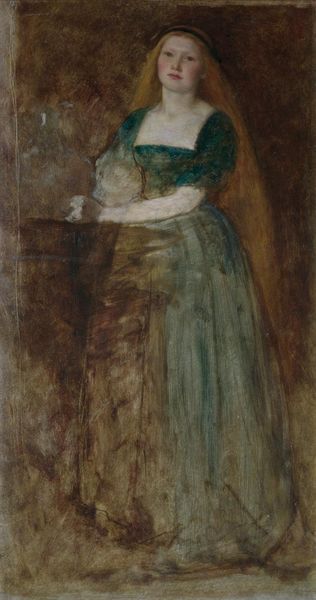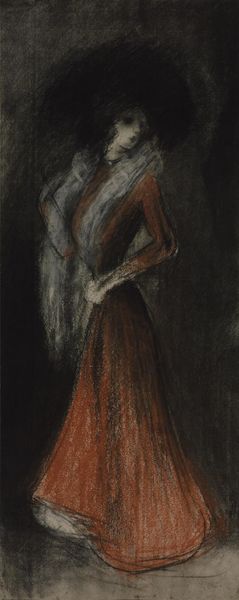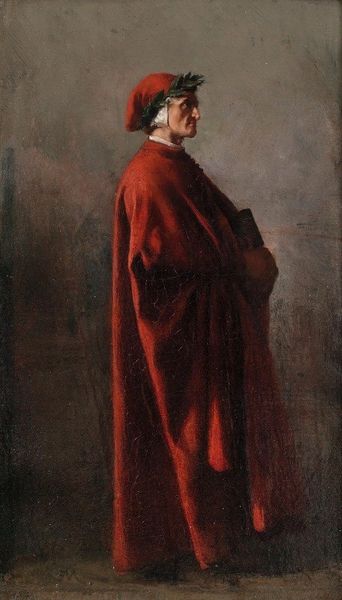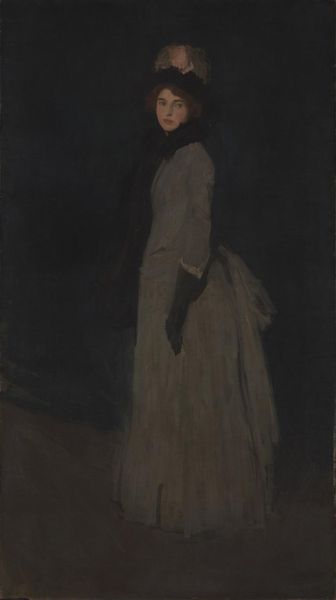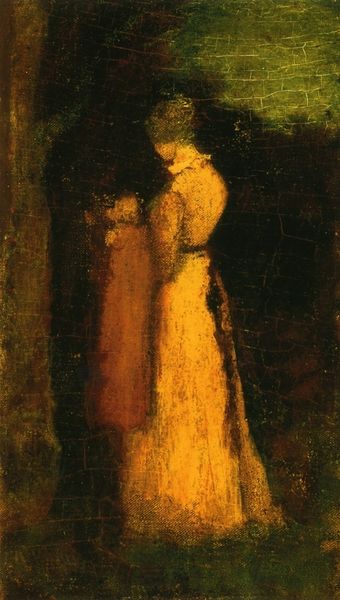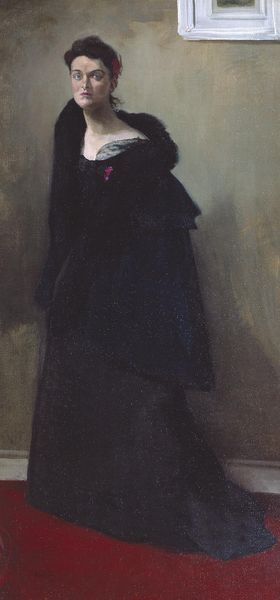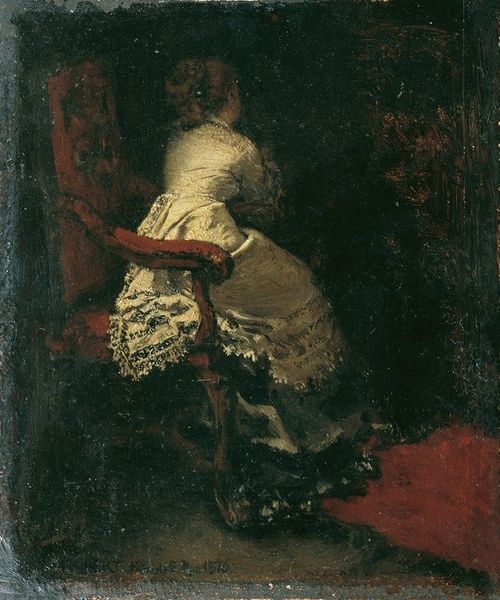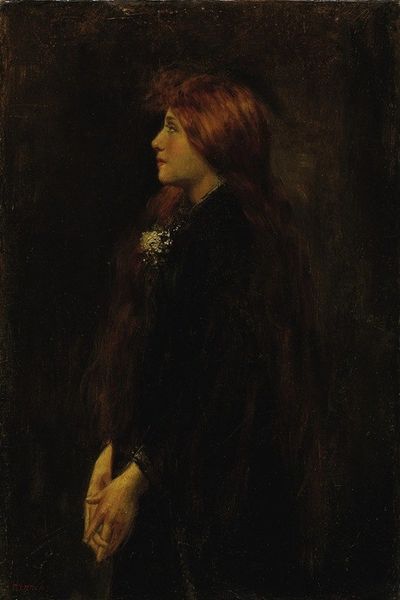
Copyright: Public Domain: Artvee
Curator: Jozef Hanula, a Slovak painter working in the late 19th century, created this piece titled "Portrait of a lady with a veil" around 1894. It's an oil painting, very much in keeping with the academic style that was popular then. What's your immediate impression? Editor: It strikes me as… melancholic. The subdued color palette and the woman’s averted gaze certainly contribute to a sense of somber reflection, a study in understated elegance. Curator: Yes, and the veiling introduces some important ideas to consider about this particular representation of women at the time. It’s tempting to see it through a feminist lens, considering what constraints women faced in 19th-century European society. How much of their identity was concealed or obfuscated? Editor: Indeed, but even before getting to context, the composition leads to a sort of quiet grandeur. Note how Hanula masterfully guides the eye through subtle gradations of light and shadow, creating depth with restrained tones, to produce a captivating character study. What do you know about the physical making of this particular piece? Curator: Jozef Hanula, though highly skilled in representational techniques, likely experienced the same financial constraints and pressures as his contemporaries. For instance, who was his paint supplier? Did he buy from local providers, or through someone else? Editor: That's something to delve into, I agree. However, regardless of material costs and availability, look how the painting showcases the technical virtuosity expected of artists within the academic tradition, a tradition still valuing realistic depiction but tending to veer towards idealized subjects. Curator: True, it reflects that tradition’s pursuit of realism. But understanding the social milieu is critical to appreciating the art fully. Perhaps there were external factors contributing to a prevailing sense of constraint or reserve. And the creation of that imagery is telling on many different social and historical levels. Editor: Perhaps it's not either/or. Even accounting for societal pressures of the time, what's undeniable here is the skillful rendering, the precise lines and tonal control. Curator: So, beyond formal artistry, seeing this portrait requires acknowledging the power structures at play that affect both its creation and how its subject is portrayed. It all ties together. Editor: Agreed. Appreciating that tension, between aesthetic achievement and social realities, adds yet another enriching dimension.
Comments
No comments
Be the first to comment and join the conversation on the ultimate creative platform.
